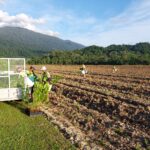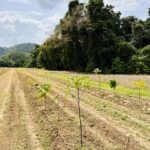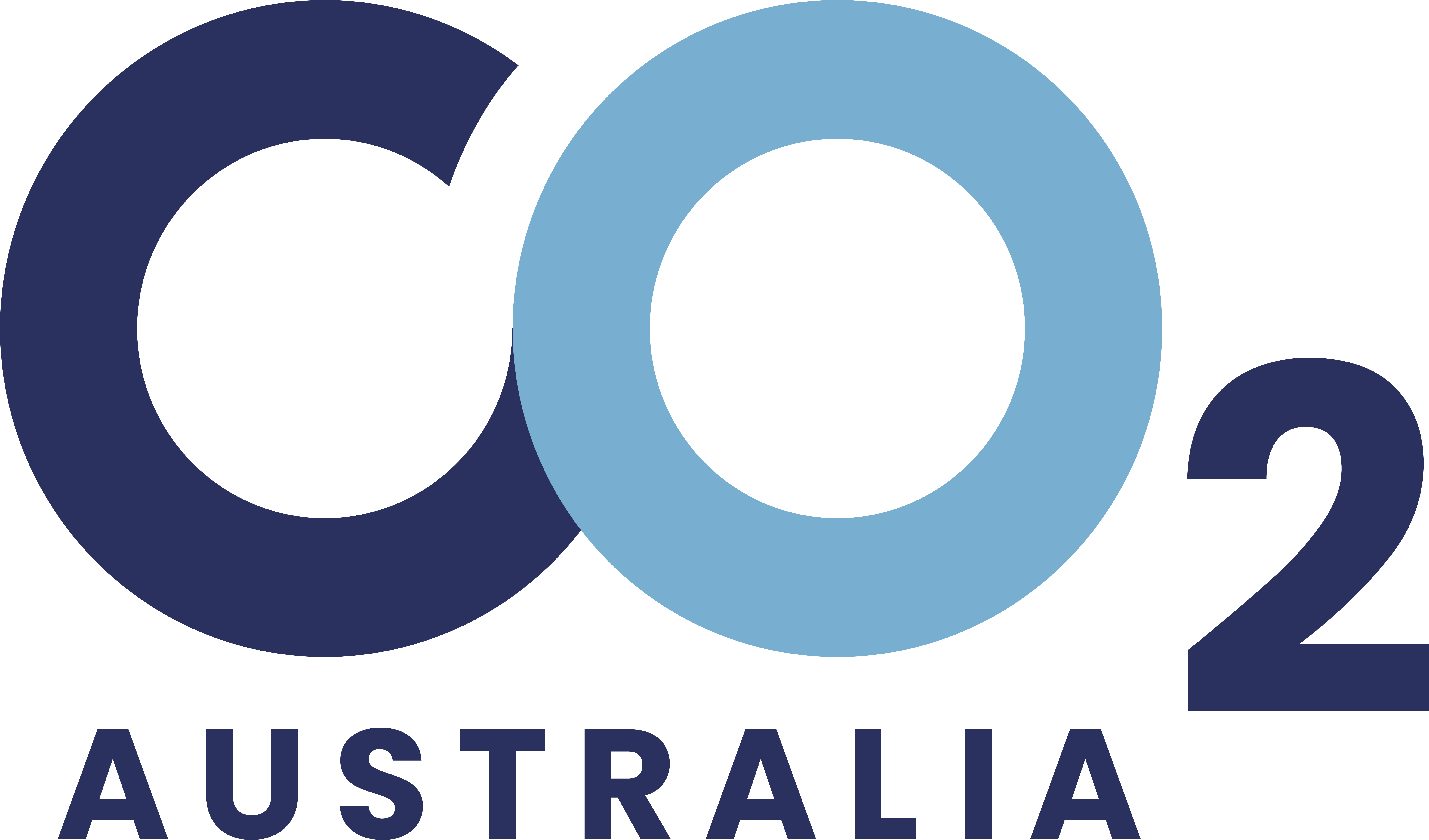
by CO2 Australia | Oct 9, 2024 | News
The Saltwater Creek Carbon Project
In September 2021, CO2 Australia achieved certification of Australia’s first Environmental Account by Accounting for Nature (AfN), with subsequent accounts certified in December 2022 and October 2023.
The Saltwater Creek Carbon project is a 25-year, $3.74 million collaboration between Queensland Government and CO2 Australia. Located in the Wet Tropics Bioregion of north Queensland, the project will re-establish approximately 55 hectares of tropical rainforest and eucalypt forest communities endemic to the region. This will involve incorporating 55 rainforest species into the plantings, which will result in improved connectivity between the property and the Mossman Gorge section of Daintree National Park which is part of the Wet Tropics World Heritage Area. Threatened species including the southern cassowary, spot-tailed quoll, common mistfrog and tapping green-eyed frog have been recorded in adjacent properties. This project will also restore habitat and facilitate the dispersal of these threatened species across the broader landscape.
Accredited Accounting for Nature® accredited experts alongside CO2 Australia’s ecologists Dr Cath Bowler and Dr Jarrad Cousin completed all the necessary fieldwork and reporting to support the Environmental Account. This was undertaken using CO2 Australia’s own AfN-accredited Native Vegetation Econd® method. Following a rigorous independent audit, the Environmental Account was certified by AfN in September 2024.
If you would like any assistance with establishing an Environmental Account under the Accounting for Nature® Framework, whether it be for a carbon planting project, grazing enterprise or to track the condition of a natural area estate, please feel free to contact CO2 Australia and we will help you on the path to accounting for nature.







by CO2 Australia | May 10, 2024 | Projects
Australia’s Largest Carbon Estate – Woodside
In 2008, Woodside Petroleum engaged CO2 Australia to deliver Australia’s biggest commercial emissions offset program based on dedicated carbon sink tree plantings.
This groundbreaking initiative pre-dated the Clean Energy Regulator and was the largest planting project of its kind ever undertaken within Australia. The project was a $100 million contract in which we delivered 20,000 hectares of tree plantings across Western Australia and New South Wales.
We act as the Australian Carbon Credit Unit (ACCU) Scheme agent to Woodside and have successfully registered four ACCU Scheme projects in relation to this program. As agent, we manage all aspects of ACCU production over the 30-year lifetime of these carbon assets, and provide a range of advisory services to Woodside, including around ACCU delivery scheduling and delivery risk mitigation. CO2 Australia is contracted to manage these plantings for 50 years and we continue to monitor and measure their performance. This collaboration includes Indigenous employment opportunities for the tree measurement program, land management and landholder relationship management at the location of the tree plantings.
Location
Regional WA and NSW
Services
Land acquisition and management, planting, tree monitoring, ACCU Scheme agent, reporting
Over 20,000 ha of tree plantings across WA and NSW
Successful registration of four ACCU Scheme projects for this program
Indigenous stakeholder employment and benefits
In a first for the Australian plantation forestry sector, CO2 Australia assisted Forico to register a...
In one of the first projects of its kind, CO2 Australia worked with the New South Wales (NSW) Aboriginal...
CO2 Australia and Tahbilk Winery have a long-standing relationship, beginning in 2012 when CO2 Australia...

by CO2 Australia | May 10, 2024 | Projects
Wilga Park Project – LRF/Accounting For Nature®
The Restoring Box-Gum Grassy Woodland for Threatened Species of the Nandewar Bioregion (Wilga Park) Project is a 25-year, $1.96 million collaboration between the Queensland Government and CO2 Australia to deliver approximately 110 ha of degraded land restored to a natural functioning ecosystem; providing habitat for threatened species, landscape connectivity and climate resilience.
Revegetation areas will re-establish vegetation communities consistent with White Box – Yellow Box – Blakely’s Red Gum Grassy Woodland and Derived Native Grassland; a critically endangered Threatened Ecological Community under the Environment Protection and Biodiversity Conservation Act 1999 (Cth; EPBC Act).
Importantly, the Environmental Account area will contribute to filling in previously cleared areas associated with more productive lowland soils; connecting with extensive areas of upland remnant vegetation communities adjacent the project area. Ongoing quarterly biodiversity surveys undertaken on the property since 2017 by CO2 Australia ecologists have confirmed the presence of a number of threatened species listed under the Nature Conservation Act 1992 (Qld) and/or the EPBC Act, including squatter pigeon, painted honeyeater, hooded robin, brown treecreeper, diamond firetail, southern whiteface and Crane’s macrozamia. There are also confirmed recent records of other threatened species on the property, including the spot-tailed quoll.
The goal of the Environmental Account is to monitor and track improvement in biodiversity co-benefits associated with the restoration project through the calculation of Native Vegetation Econd®. Ongoing monitoring of the Account will be undertaken to help inform management decisions, including Econd® surveys by CO2 Australia ecologists in accordance with the accredited CO2 Australia Native Vegetation Condition Monitoring Method. Other activities include monitoring and control of weeds, and the assessment of fire breaks and fuel loads to reduced likelihood of wildfire events impacting on the success of the planting sites and surrounding intact remnant vegetation. Further opportunities to improve biodiversity co-benefits of the project will continue to be explored for the life of the project, based on the outcomes of Econd® assessments.
Client
Accounting for Nature®, BirdLife Australia, Queensland Land Restoration Fund
Location
Southern Queensland
Industry
Government, conservation
Services
Revegetation, environmental accounting, fauna surveys and monitoring
Restoration of a critically endangered ecological community
Improving habitat for threatened species, landscape connectivity and climate resilience
Leading innovation and progress in environmental accounting
In a first for the Australian plantation forestry sector, CO2 Australia assisted Forico to register a...
In one of the first projects of its kind, CO2 Australia worked with the New South Wales (NSW) Aboriginal...
CO2 Australia and Tahbilk Winery have a long-standing relationship, beginning in 2012 when CO2 Australia...

by CO2 Australia | Dec 13, 2021 | News
We at CO2 Australia are incredibly proud to have Australia’s first ever environmental account, certified by Accounting for Nature Ltd!
The third-party certification underpinning our Lake Wivenhoe revegetation project is recognised as applying the most scientifically credible and trusted environmental accounting standards in the world. Today marks an exciting new chapter in Australia, as environmental accounting drives better investment, policy and management decisions in natural capital.
CO2 Australia’s project involved the planting of more than 150,000 trees across seven sites adjacent to Lake Wivenhoe in south-east Queensland. The planting sites, which were initially identified by the World Wide Fund for Nature (WWF-Australia), are within an important koala habitat corridor in south-east Queensland. At least 90% of the trees planted will be species that provide habitat for the koala. This will increase the amount and quality of habitat for the koala in the corridor and provide connectivity between existing areas of habitat. The project will also reduce the amount of sediment runoff entering Lake Wivenhoe, thereby improving water quality in south-east Queensland’s largest water storage.
CO2 Australia applied an Accounting for Nature® Accredited Method to monitor and track improvement in biodiversity co-benefits associated with the project through the calculation of Native Vegetation Econds®. The Accredited Method applied was developed and trialled by CO2 Australia over 18 months, and following certification by the Accounting for Nature® Standards and Accreditation Committee, was one of the first certified national native vegetation condition assessment methodologies. To gain certification, CO2 Australia undertook a rigorous third-party verification process to ensure its project complied with the Accounting for Nature® Framework – this project is now formally recognised as the first environmental account in Australia, applying the most scientifically credible and trusted environmental accounting standard in the world.





















